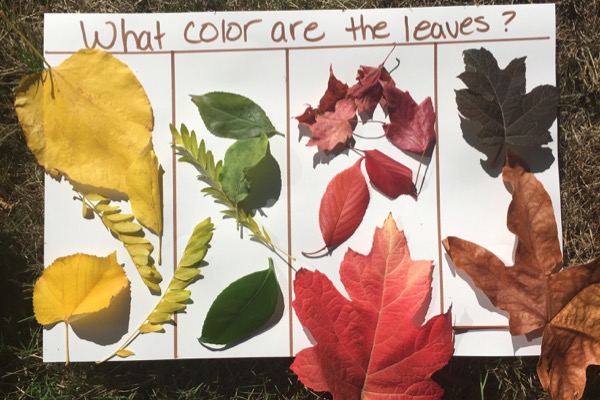Mining Mother Nature: Taking Mathematics Learning Outdoors


For many of us, autumn is our favorite time of year, marked by a change in the air, gorgeous leaves, sweater weather, and, of course, pumpkin-flavored coffee drinks. As a teacher in the Texas Hill Country, I loved how the children would bring me the treasures they’d found in the outdoor play area: acorns, fiery red leaves, and pine cones of all sizes. These natural materials invariably ended up in our classroom, displayed in baskets in our Discovery area.
Apart from delighting children, these natural materials offer a wealth of opportunities for engaging mathematics activities. In my classroom, we created “nature bracelets” by putting a piece of transparent tape (sticky side up) around each child’s wrist. The children would then collect and stick small bits of pine needles, leaves, plants, seeds, gravel, sticks, sand, and even dirt to decorate their bracelets. For older children, I would challenge them to create a pattern on their bracelet. Children LOVE creating unique bracelets using treasures found in nature. We did this throughout the year, gathering a wide variety of natural materials as the seasons changed.
We also used natural materials for graphing activities. I created and laminated large two-, three-, and four-column tables out of chart paper or poster board for children to use as they sorted and compared objects. I used a dry-erase or overhead pen to write the chart’s topic at the top, such as “What color are the leaves?” I then modeled sorting the leaves and putting like-colored leaves in the same column.
As children become more familiar with the concept of comparing objects based on color, you can invite them to sort items by size, shape, or even texture. Here are some examples:
One day as I was visiting my favorite store for teaching materials (hint: everything costs $1), I noticed graphing grids all over the place! I snapped up a seasonal placemat with a lovely gold-on-linen grid that the children could use to sort small items.
I also got a plastic placemat with a green and white grid for sorting and graphing small items when we go outdoors.
In the spring, the plastic was perfect for the sorting inevitable collection of insects and worms, being easy to wipe down afterward. I found that the children were more likely to use the placemats than the large poster boards. I think the smaller size makes them easier for children to maneuver and use.
Wherever you are as you explore this beautiful time of year, consider using the natural materials in your environment to explore mathematics concepts (such as patterns and comparing and measuring) and cognitive skills (such as classification, or sorting). Take another look around your classroom (or your home) to see what you might be able to “repurpose” to engage children in exploration and enhance their learning.
Now that I think about it, I just went apple picking. I’m willing to bet that apples could be used for nonstandard measurement activities!